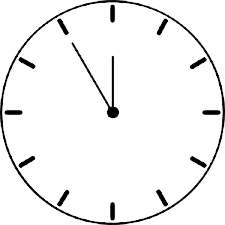Software development efficiency is paramount—every aspect of an application’s performance matters, from optimizing processing speeds to enhancing user experience. One crucial element often overlooked is timer resolution—the precision with which an application measures time intervals.
With the ability to directly control timer resolution, developers can fine-tune performance, improve accuracy, and deliver a superior product. Let’s delve into how applications can achieve this and its benefits.
Table of Contents
Understanding Timer Resolution:
Timer resolution refers to the smallest unit of time a system’s timer can measure. Traditionally, operating systems provide default timer resolutions, which may not always align with an application’s specific needs. For instance, a default timer resolution of 15.6 milliseconds means the system updates time values in increments of 15.6 milliseconds. While sufficient for many tasks, specific applications require higher precision.
The Importance of Timer Resolution:
Accurate timing is critical in various applications, including gaming, multimedia processing, scientific simulations, and real-time monitoring systems. Precise timing ensures smooth animations and responsive controls, enhancing the gaming experience. Similarly, multimedia applications rely on accurate timing for synchronized audio and video playback. In scientific simulations and real-time monitoring, precise timing is indispensable for accurate data collection and analysis.
Challenges with Default Timer Resolution:
Default timer resolutions provided by operating systems may not always meet the demands of high-performance applications. A coarse timer resolution can result in inaccuracies, jitter, and performance degradation. For instance, in a real-time monitoring system, a default timer resolution of 15.6 milliseconds may not capture rapid changes in data, leading to missed observations or delayed responses.
Direct Control of Timer Resolution:
To address these challenges, developers can opt for approaches that allow direct control of timer resolution within their applications. This involves adjusting the timer frequency or using specialized APIs to set custom timer resolutions. By bypassing the default system settings, developers gain finer control over timing, ensuring optimal application performance.
Techniques for Direct Control:
Adjusting Timer Frequency: Some platforms provide mechanisms to adjust the system timer frequency programmatically. Increasing the timer frequency allows developers to achieve higher resolution, allowing for more precise timing measurements. However, this approach may have implications for system-wide timing and power consumption.
Utilizing Specialized APIs: Certain operating systems offer specialized APIs or libraries specifically designed for controlling timer resolution. These APIs allow developers to set custom timer resolutions tailored to their application’s requirements. By interfacing directly with the system’s timing mechanisms, developers can achieve precise control over timing without affecting system-wide settings.
Benefits of Direct Control:
Enhanced Precision: By setting custom timer resolutions, applications can achieve higher precision in timing measurements, reducing inaccuracies and jitter.
Improved Performance: Fine-tuning timer resolution can improve performance, especially in tasks requiring real-time responsiveness or synchronized operations.
Optimized Resource Utilization: Customizing timer resolution allows developers to allocate system resources more efficiently, minimizing overhead and maximizing performance.
Tailored to Application Needs: Direct control of timer resolution enables developers to adapt timing mechanisms to suit their application’s specific requirements, ensuring optimal performance under varying conditions.
Considerations and Best Practices:
While direct control of timer resolution offers numerous benefits, developers must consider certain factors:
Platform Compatibility: Ensure compatibility with the target platform and operating system when implementing custom timer resolution control.
Resource Usage: Be mindful of the impact on system resources, such as CPU utilization and power consumption, when adjusting timer frequency or resolution.
Testing and Validation: Thoroughly test the application under different timing conditions to verify performance and accuracy, especially in real-time or mission-critical scenarios.
Documentation and Maintenance: Document the approach used for controlling timer resolution and adhere to best practices for code maintenance to facilitate future updates and troubleshooting.
Conclusion:
In the quest for optimal performance and precision, directly controlling timer resolution empowers developers to fine-tune their applications to perfection. Whether achieving smooth gameplay, synchronized multimedia playback, or accurate scientific simulations, precise timing is a cornerstone of high-performance software.
By leveraging techniques for direct control of timer resolution, developers can unlock new levels of efficiency, responsiveness, and user satisfaction in their applications. Embrace the power of precise timing and elevate your software to new heights of excellence.
